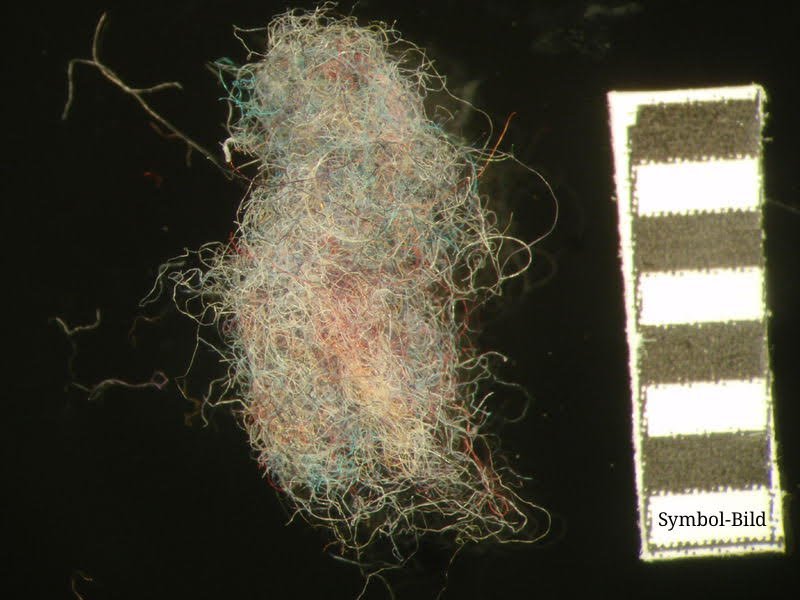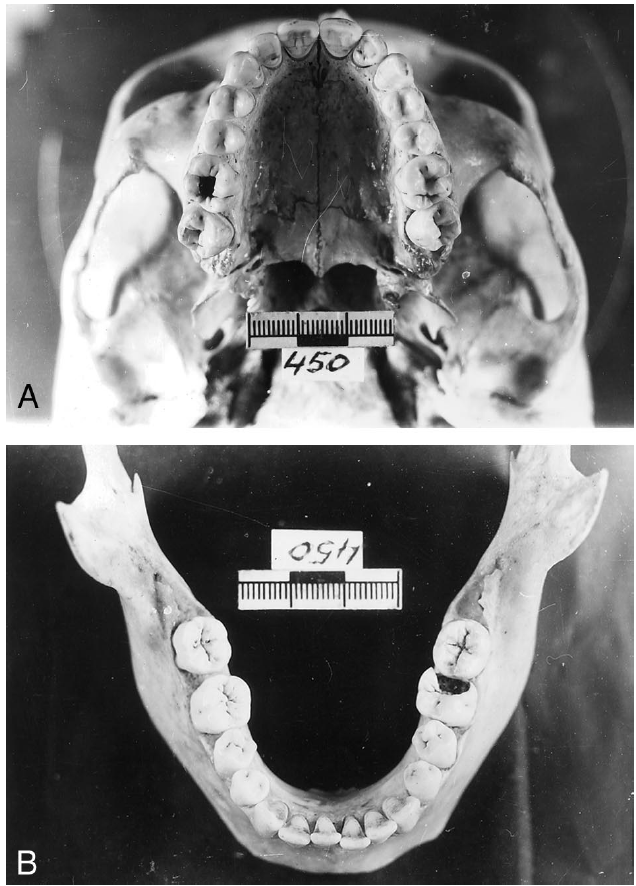Source: Electrophoresis (1998) 19(14): 2396-2397, doi: 10.1002/elps.1150191406.
Mark Benecke, Manuela Knopf, Wolfgang Voll, Wolfgang Österreich, Yvonne Jacobi, Jeanett Edelmann
Abstract
Applied DNA typing in medico-legal investigations, in criminalistic practice, and in paternity cases often relies on high inclusion and exclusion probabilities. For that reason, the short autosomal tandem repeat locus D8D306 was validated for forensic use and incorporated into a nonoverlapping multiplex reaction with HUMDHFRP2 and HUMCD4. The allele frequencies of D8S306 in four different regions of Germany (n = 1220 alleles) were determined for use in a population database; the allele distributions did not significantly deviate from each other. The hererozygosity of D8S306 is 83 %, expected exclusion chance in stain cases is 96% (paternity cases: 69%), the lowest amount of sucessfully amplified DNA was 30 pg. The alleles are in Hardy-Weinberg equilibrium (exact test).
Short tandem repeats (STRs) are the main loci chosen for recent DNA typing [ 1-3]. Forensically important STRs are mainly composed of intronic tri- or tetrameric core units which form alleles by defined numbers of repetition. Polymorphic loci with a relatively high number of alleles and additional rare alleles can help to further improve exclusion and inclusion probabilities obtained by DNA profiling [4]. In a German population study of the STR HUMD8S306 (n = 1220 alleles), we found a locus which fulfills the practical requirements (see [5]) making it suitable for both singleplex and multiplex DNA typing.
DNA was obtained from unrelated inhabitants from four different regions of Germany (Basdorf: North, n = 262 alleles; Leipzig: CentraVEast, n = 400 alleles; Munich: South, n = 240 alleles; Cologne: West, n = 240 alleles) and amplified by the following PCR procedure [6, 121 with 29 cycles in total: 30 s at 94°C (initial denaturation), 20 s at 94°C (denaturation), 20 s at 60.5 "C (annealing), and 50s at 72°C (extension). At the end, a single final extension step was performed (30 s at 72 "C). Vertical denaturing PAGE was performed on an A.L.F. sequencer (green laser, Amersham Pharmacia Biotech, Uppsala, Sweden) and on an ABI 310 sequencer (Perkin-Elmer, Foster City, CA) following standard protocols.
Allele length determination on both automats sometimes led to a constant difference of 2 bp, a well-known artifact depending on the bp standards (sizes) used. If the allele sizes are determined by comparing them against an allelic ladder, bp determination is identical on both machines.
A total number of 17 alleles was observed, of which 10 had the character of major alleles as found in at least three of our four population samples. Allele categorizing followed the original sizes given in [6]. The frequencies of all alleles found are given in Table 1. Only minor differences in the allele frequencies were observed. Statistical analysis with the DNA View software (Charles Brenner, Berkeley) shows that the system is in Hardy-Weinberg equilibrium, and that it has appropriate levels of heterozygosity and expected exclusion chances. Heterozygosity : 83 O/o; expected exclusion chance in stain cases: 96 %*; expected exclusion chance in paternity cases: 69 %*; mean Hardy-Weinberg equilibrium p-value: 0.3; no mutation analysis performed (*: calculated with DNA View's Exact Test [7-91). No relevant differences in data from the different regions of Germany were observed.
To establish a time- and cost-efficient DNA typing procedure, D8S306 was successfully co-amplified with the two short tandem repeats DHFRP2 (tetranucleotide repeat, [lo]) and HUMCD4 [ll]. Since this multiplex reaction produces nonoverlapping PCR products [3], it can also be electrophoresed in environments which do only allow low-cost silver staining instead of semiautomatic fragment length analysis. The triplex system has an exclusion chance of 1:2 X lo3 to 1:7 X lo6 and was incorporated into medico-legal DNA analysis by a number of forensic institutes and criminal investigation agencies.
The STR system underwent a successful systematic forensic validation on a large quantity of stains (stored urine from German doping controls and the Olympic Games in Atlanta, saliva, plucked hair [ 121). Mixtures of DNA in a ratio of up to 1:3.5 could be detected and distinguished with D8S306, and less than 30 pg DNA (the equivalent of around four diploid human cells) were necessary for successful amplification [ 12, 131. Especially the high number of extra alleles together with evenly distributed frequencies of major alleles makes the system attractive for cases in which high exclusion values (up to total individualization, which means that there is no more random chance of finding the same DNA profile in any other person) are preferred; another advantage of the forensic application of D8S306 is its high sensitivity (less than 30 pg of DNA are sufficient for singleplex PCR).
MB performed all experiments related to this paper at the Institute for Legal Medicine, University of Cologne, Germany, where he was supported by a Fortune scholarship. We wish to thank Mark Desire, OMCE NYC, for his comments on the manuscript, and Christiane Lach, Institute for Legal Medicine, University of Cologne, for her interest in the locus.
References
[I] Gill, P., Kimpton, C. P., Urquhart, A., Oldroyd, N., Millican, E. S., Watson, S. K., Downes, T. J., Electrophoresis 1995, 16, 1543-1552.
[2] Benecke, M., Naturwissenschaften 1997, 84, 181-188.
[3] Schmitt, C., Benecke, M., Electrophoresis 1997, 18, 690-694.
[4] Moller, A,, Schiirenkamp, M., Brinkmann, B., Int. J. Legal Med. 1995, 108, 75-78.
[5] Wiegand, P., Budowle, B., Rand, S., Brinkmann, B., Int. J. Legal Med. 1993, 105, 315-320.
[6] Nelson, L., Riley, R., Lu, J., Robertson, M., Ward, K., Hum. Mol. Genet. 1993, 2, 1984.
[7] Benecke, M . , Schmitt, C., Staak, M., Rechtsmedizin 1997, 7, 98-100.
[8] Benecke, M., Schmitt, C., Staak, M., Proceedings of the First European Symposium on Human Identification, Promega, Madison, WI 1997, p. 148.
[9] Guo, S. W., Thompson, E. A., Biometrics 1992, 48, 361-372.
[10] Polymeropoulos, M. H., Xiao, H., Rath, D. S., Merril, C. R., Nucleic Acids Res. 1991, 19, 4792.
[11] Edwards, M. C., Clemens, P. R., Tristan, M., Pizzuti, A. A,, Gibbs, R. A,, Nucleic Acids Res. 1991, 19, 4791.
[12] Benecke, M., Ph.D. Thesis, Faculty of Medicine of the University of Cologne, 1997.
[13] Benecke, M., 17th Stain Workshop of the German Society for Legal Medicine, Hannover, 1997.




